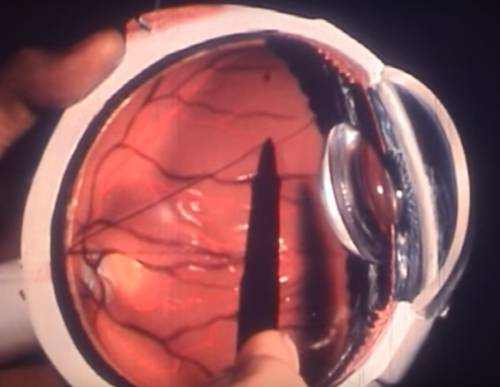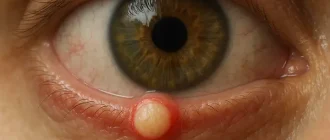Carotid-cavernous fistula (CCF) is a rare vascular condition that occurs when an abnormal connection between the carotid artery and cavernous sinus takes place within the skull. This condition can lead to severe complications, including vision loss and neurological disturbances.
1. Definition and Overview of Carotid-Cavernous Fistulas
Carotid-cavernous fistulas (CCFs) refer to an abnormal communication between the carotid artery and/or its branches and a large vein called the cavernous sinus within the skull.
This condition, which is rare, can be classified into two main types – direct or indirect – depending on the site of the shunt. Direct CCFs mostly result from traumatic injury or rupture of an aneurysm, while indirect CCFs are often associated with genetic or co-morbid conditions. Symptoms of CCFs can vary widely, and include visual and auditory disturbances, headache, redness or swelling of the eye, and pulsatile tinnitus.
Early diagnosis and effective treatment of CCFs are crucial in preventing potential complications such as vision and hearing loss. In the following sections, we will delve deeper into the causes, symptoms, diagnosis, and treatment options for this condition.
2. Causes and Risk Factors of Carotid-Cavernous Fistulas
According to the previously discussed definition and overview of carotid-cavernous fistulas (CCFs), this abnormal shunt from the carotid artery to the cavernous sinus can occur due to both traumatic or spontaneous causes. In cases of traumatic CCF, head injuries that cause damage to the intracavernous carotid artery are the primary cause.
However, CCFs may also occur spontaneously or due to secondary causes such as atherosclerosis, connective tissue disorders, or medical procedures that involve the carotid artery.
Risk factors for CCFs include a history of head injuries or connective tissue disorders, hypertension, and arteriovenous malformations. By understanding these causes and risk factors, healthcare professionals can diagnose and treat CCFs effectively.
3. Signs and Symptoms of Carotid-Cavernous Fistulas

When it comes to detecting carotid-cavernous fistulas (CCFs), it is important to look out for the clinical triad of symptoms, which include pulsatile proptosis, chemosis, and bruit.
Other common CCF symptoms may include red eyes, visual disturbances, orbital pain, and cranial nerve palsies. These symptoms usually present suddenly, and can be quite alarming. If left untreated, CCFs can lead to serious complications like vision and hearing loss, and even stroke.
Therefore, it is important to seek medical attention immediately if you experience any of these symptoms. In addition to these signs and symptoms, patients with a history of head injury, connective tissue disorders, or hypertension may be at greater risk of developing CCFs.
Therefore, it is important to be aware of these risk factors as well. Early diagnosis and treatment can greatly improve outcomes, and prevent the progression of the condition.
4. Diagnosis of Carotid-Cavernous Fistulas
To diagnose Carotid-Cavernous Fistulas (CCFs), a series of tests are typically performed, including an ophthalmological examination, neuroimaging, and angiography.
The ophthalmological examination aims to observe the presence of symptoms such as proptosis or bulging of the eye, chemosis or swelling of the eyelids, and ocular bruit or abnormal sounds heard during auscultation. Neuroimaging, such as computed tomography (CT) or magnetic resonance imaging (MRI), can help rule out other conditions that may present with similar symptoms.
Finally, angiography is essential to confirm the diagnosis of CCFs and determine the exact location and size of the fistula, which will inform treatment strategies.
Early diagnosis is crucial to avoid further complications such as vision loss or permanent damage to the optic nerve.
5. Surgical Treatment of Carotid-Cavernous Fistulas
Surgical treatment for carotid-cavernous fistulas involves a craniotomy, which is the surgical opening of the skull, to access the fistulous connection between the carotid artery and the cavernous sinus. Once the connection is identified, it is occluded or blocked by surgical clips, which prevent any further flow of blood between the carotid artery and the cavernous sinus.
Although surgery can be effective for some types of carotid-cavernous fistulas, it is important to note that not all CCFs can be treated with surgery alone. In some cases, endovascular treatment or coil embolization may be necessary, depending on the size and location of the fistula.
It is important to work with a knowledgeable and experienced medical team to determine the best course of treatment for each individual patient.
6. Endovascular Treatment of Carotid-Cavernous Fistulas
The endovascular treatment of carotid-cavernous fistulas (CCFs) has become increasingly popular due to its minimally invasive approach and high success rates. Endovascular treatments involve placing small catheters through the arteries or veins to access the site of the fistula and block the abnormal connection using a variety of techniques.
This treatment is usually performed under local anesthesia, and patients can typically return home the same day. Endovascular treatments include both transarterial and transvenous approaches, with detachable platinum coils being one common method used to block the fistula.
In cases where traditional endovascular therapy fails or is not feasible, other approaches such as balloon embolization, stent-assisted coiling, or liquid embolic agents may be considered.
Overall, endovascular treatment can provide effective and safe treatment for CCFs, resulting in improved symptoms and outcomes for patients.
7. Coil Embolization Treatment for Carotid-Cavernous Fistulas
Coil embolization is one of the most commonly used methods for treating carotid-cavernous fistulas (CCFs). In this procedure, a small platinum coil is placed at the site of the abnormal connection, which effectively blocks the flow of blood through the fistula. This method has been proven to be highly effective, especially when the CCF is small or the connection is easy to access.
However, in larger or more complex cases, coil embolization may not be enough to completely block the flow of blood. In these cases, a combination of methods, such as stent-assisted embolization, may be used instead.
Overall, coil embolization is a safe and minimally invasive way to treat CCFs, and it typically has a high rate of success.
8. Impact of Carotid-Cavernous Fistulas on Vision and Hearing
Carotid-Cavernous Fistulas can have a significant impact on vision and hearing. Increased pressure within the cavernous sinus can compress the optic nerve, leading to vision loss or double vision. Patients may also experience hearing loss or tinnitus due to the proximity of the cavernous sinus to the inner ear. It is important to seek immediate medical attention to prevent further damage to vision and hearing.
Treatment options, such as surgical or endovascular procedures, can help restore vision and hearing and prevent long-term complications. Early diagnosis and treatment are crucial to minimize the impact on a patient’s quality of life. It is advisable to follow preventive measures, such as avoiding head trauma, to minimize the risk of developing Carotid-Cavernous Fistulas.
9. Prognosis and Recovery of Carotid-Cavernous Fistulas
The prognosis of carotid-cavernous fistulas (CCFs) is good with prompt diagnosis and appropriate treatment.
The majority of symptoms, including eye bulging, vision loss, and cranial nerve deficits usually resolve within hours to days. Endovascular and surgical treatment options have been proven to be effective in treating CCFs. Coil embolization is a minimally invasive approach that has shown promising results in treating CCFs. It is also essential to address the underlying causes of CCFs, such as trauma or the presence of an abnormality, to prevent further occurrences.
With proper treatment, patients can achieve an excellent recovery and resume their daily activities without any significant long-term effects on vision or hearing. It is crucial to seek immediate medical attention if any of the symptoms associated with CCFs become apparent. Early intervention can significantly impact the recovery and overall prognosis for patients with CCFs.
10. Preventive Measures for Carotid-Cavernous Fistulas
Carotid-cavernous fistulas can be prevented with certain measures. Avoiding head injuries is the primary way to prevent the formation of carotid-cavernous fistulas. Individuals involved in contact sports or activities that have a high risk of head injury should wear proper protective gear.
Timely treatment of any injury to the head or neck is recommended to prevent the development of these fistulas.
In addition, patients with certain medical conditions, such as Marfan Syndrome or Ehlers-Danlos Syndrome, should be regularly monitored to detect any abnormality in their blood vessels. Early detection and treatment of such conditions can prevent the formation of carotid-cavernous fistulas.
Furthermore, maintaining a healthy lifestyle that includes a balanced diet, regular exercise, and avoiding smoking and excessive alcohol consumption can also help reduce the risk of developing these fistulas.
By following these preventive measures, individuals can protect themselves from the risks and complications associated with carotid-cavernous fistulas.





